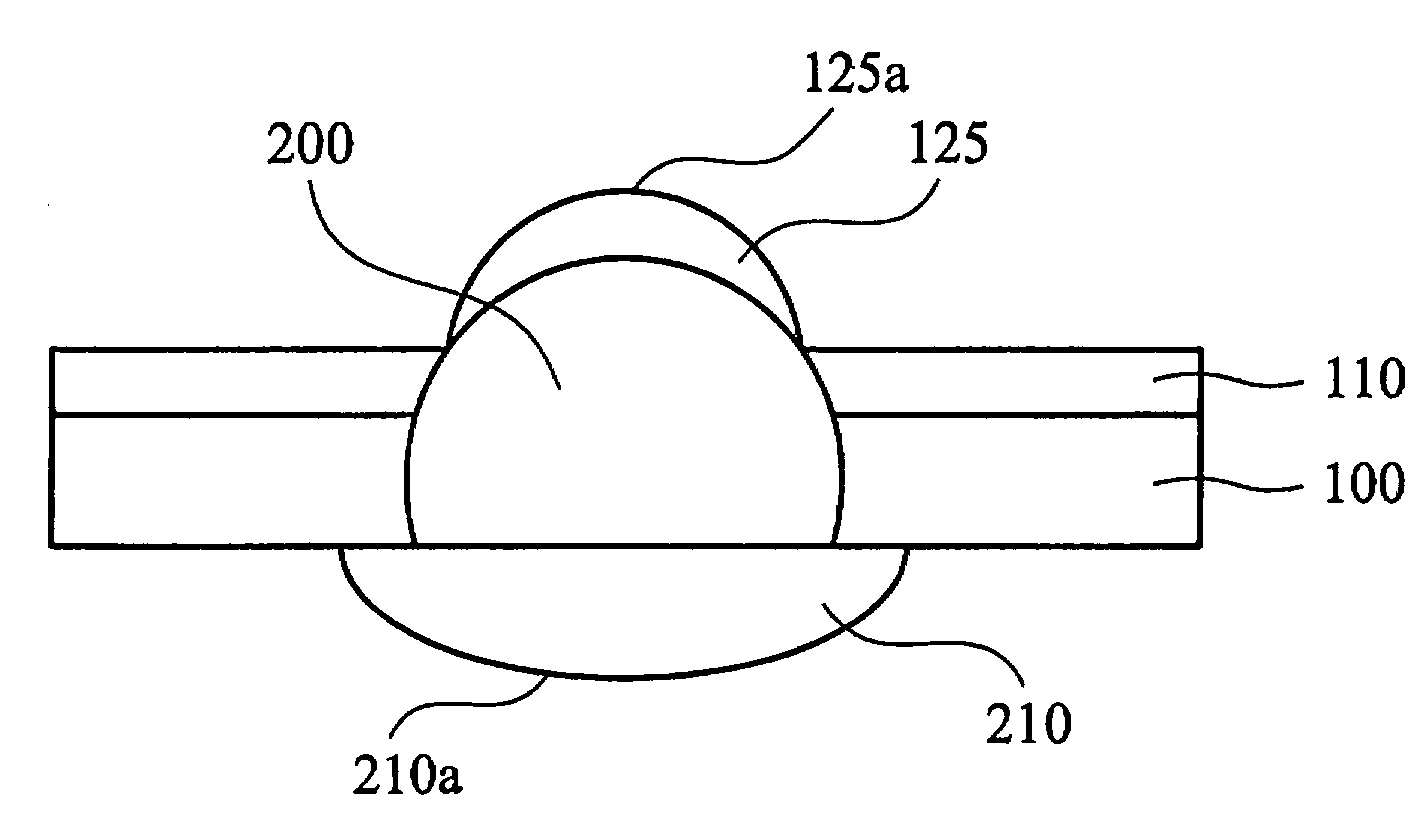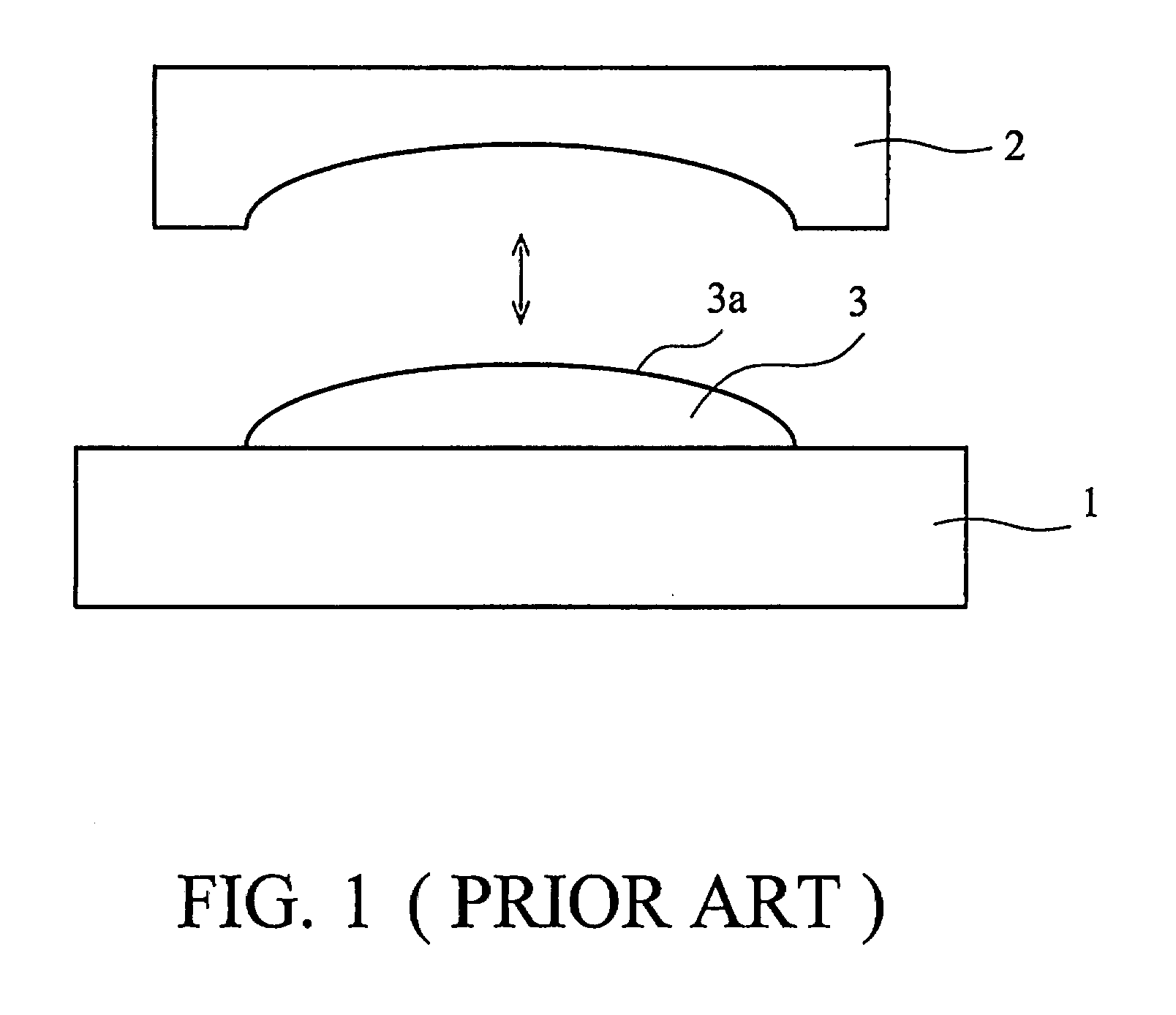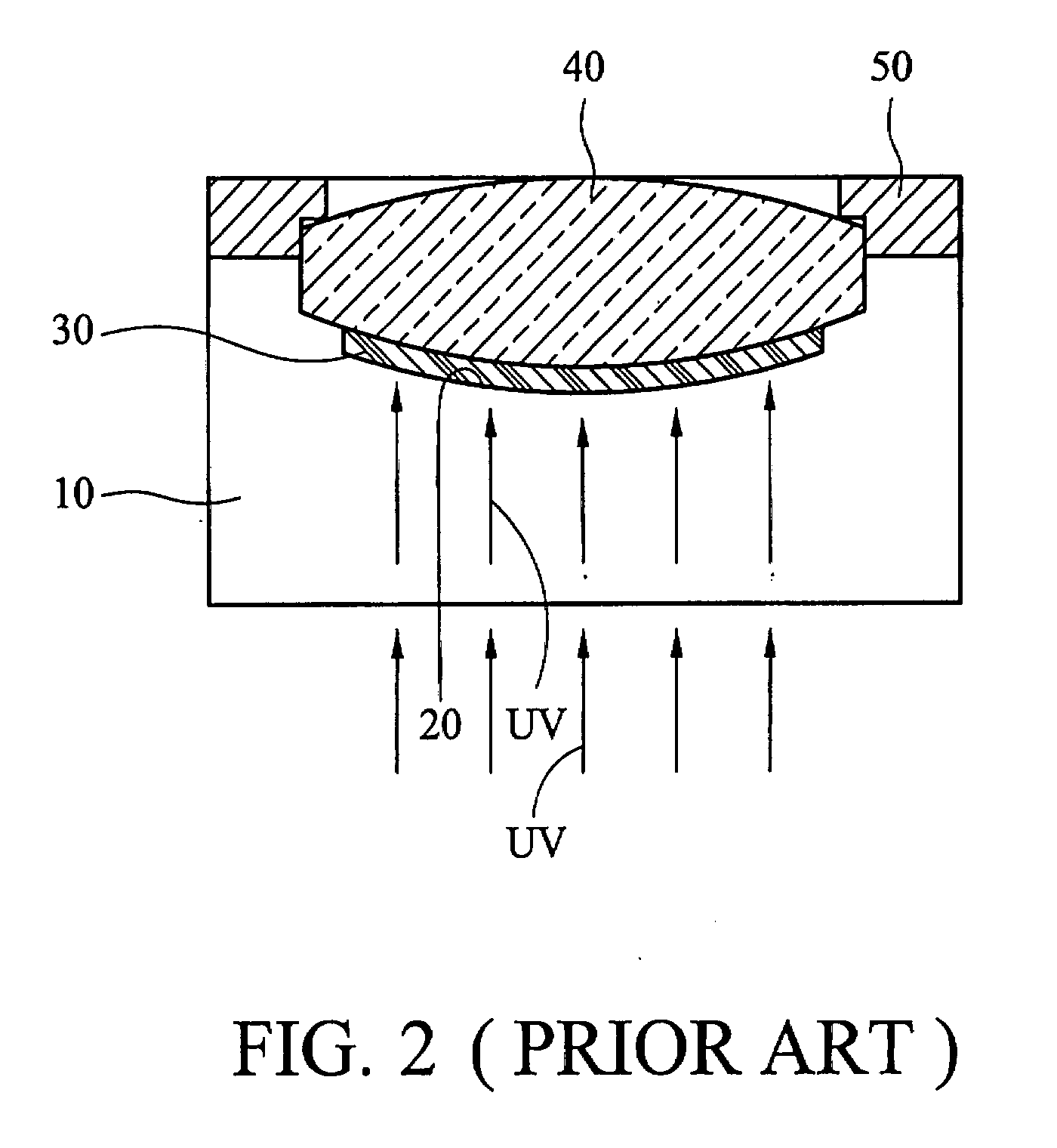Aspheric lens structures and fabrication methods thereof
- Summary
- Abstract
- Description
- Claims
- Application Information
AI Technical Summary
Benefits of technology
Problems solved by technology
Method used
Image
Examples
Embodiment Construction
[0020]The following description is of the best-contemplated mode of carrying out the invention. This description is made for the purpose of illustrating the general principles of the invention and should not be taken in a limiting sense. The scope of the invention is best determined by reference to the appended claims.
[0021]FIGS. 3-10 show cross sections illustrating fabrication of an exemplary embodiment of an aspheric lens structure with dual aspheric surfaces of the invention. Referring to FIG. 1, a substrate 100 is provided. Substrate 100 comprises a bulk silicon substrate, a quartz substrate or a glass substructure. Substrate 100 is configured as a carrier of the aspheric lens structure.
[0022]Referring to FIG. 4, the substrate 100 is perforated to create a through hole 105. The diameter of the through hole 105 is equal to or less than the diameter of a yet to be described ball lens. A ball lens 200 is inserted in the through hole 105 exposing a pre-curvature of the ball lens 20...
PUM
 Login to View More
Login to View More Abstract
Description
Claims
Application Information
 Login to View More
Login to View More - R&D
- Intellectual Property
- Life Sciences
- Materials
- Tech Scout
- Unparalleled Data Quality
- Higher Quality Content
- 60% Fewer Hallucinations
Browse by: Latest US Patents, China's latest patents, Technical Efficacy Thesaurus, Application Domain, Technology Topic, Popular Technical Reports.
© 2025 PatSnap. All rights reserved.Legal|Privacy policy|Modern Slavery Act Transparency Statement|Sitemap|About US| Contact US: help@patsnap.com



